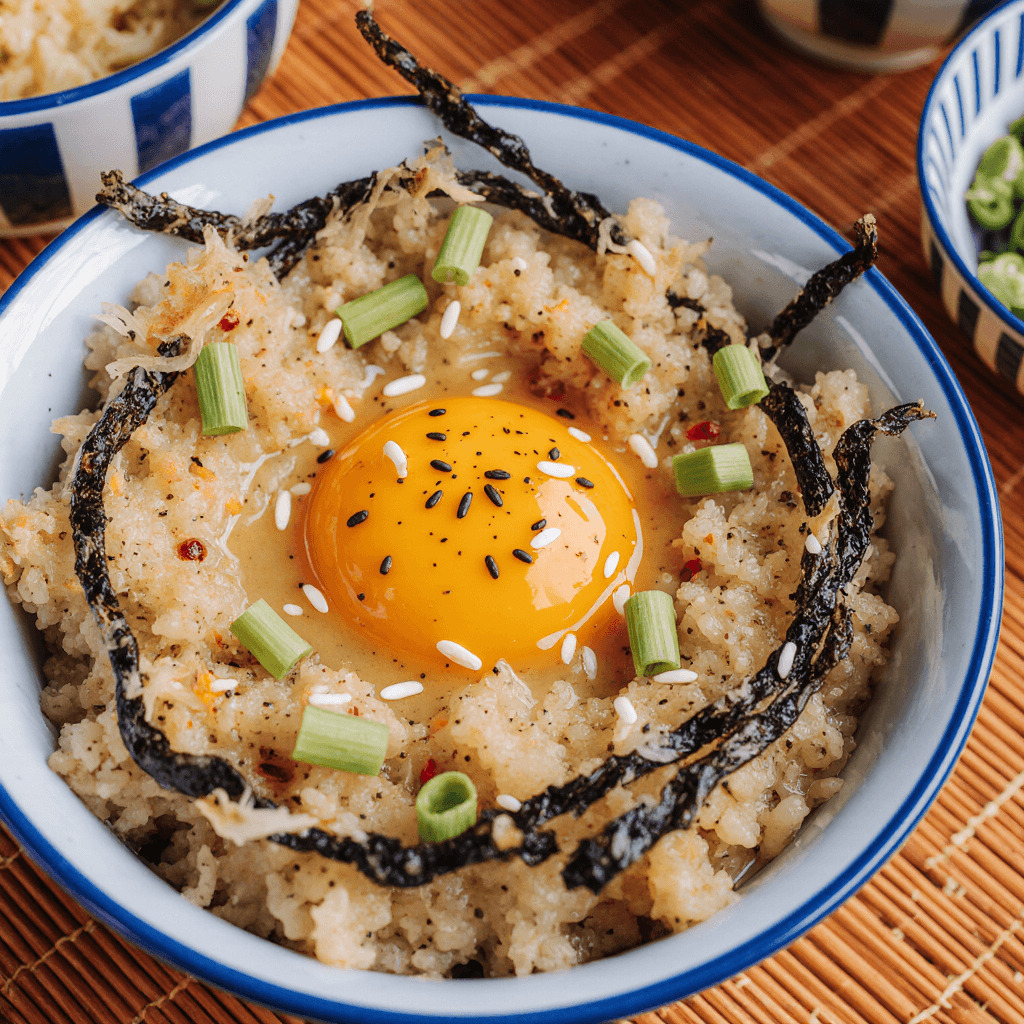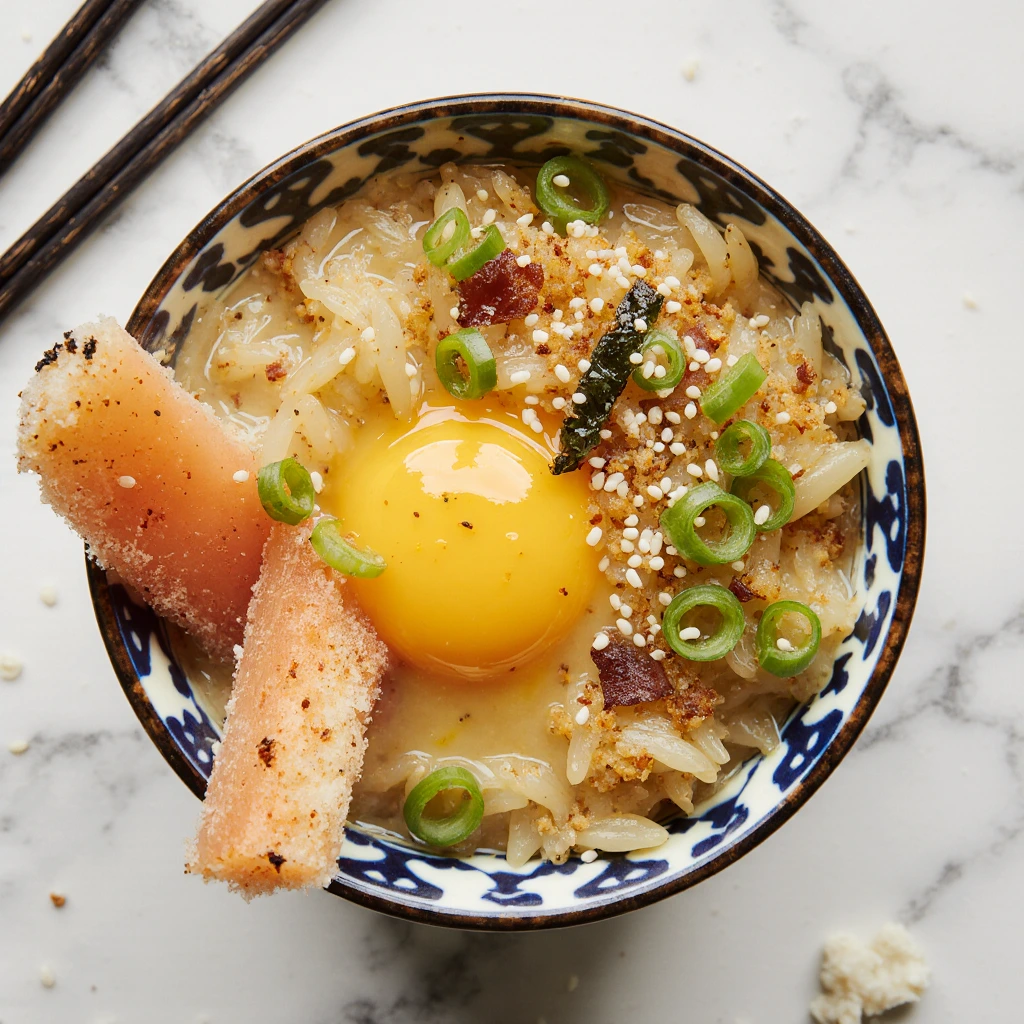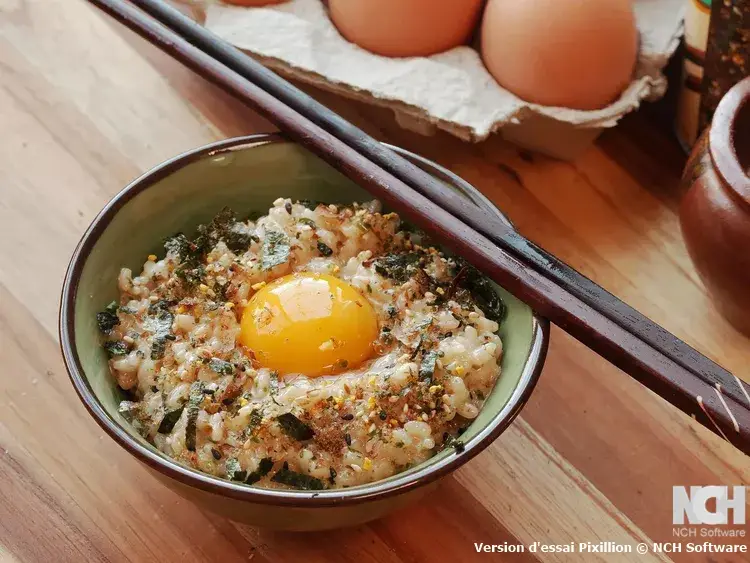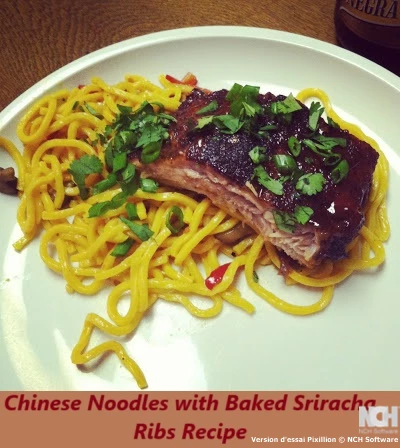How to Make Tamago Kake Gohan (No Cooking Needed!)
Table of Contents
Introduction
Did you know that millions of Japanese people start their day with a dish that requires no cooking skills whatsoever, yet delivers complete protein and satisfying comfort in under three minutes? This surprising breakfast phenomenon is Tamago Kake Gohan, a beloved Japanese comfort food that challenges Western perceptions about raw eggs and minimal cooking. Despite its simplicity, this traditional dish has sustained generations of Japanese families with its perfect balance of nutrition, flavor, and convenience.
Tamago Kake Gohan, literally translating to “egg mixed rice,” represents the epitome of Japanese culinary philosophy where simplicity meets perfection. This no-cook meal combines warm steamed rice with a fresh raw egg, creating a creamy, protein-rich dish that transforms humble ingredients into something extraordinary. Whether you’re seeking a quick breakfast solution, exploring Japanese cuisine, or looking for nutritious meal options, mastering this traditional recipe opens doors to authentic Japanese flavors while requiring minimal time and effort.
Ingredients List
The beauty of Tamago Kake Gohan lies in its minimal ingredient requirements, each playing a crucial role in creating the perfect harmony of flavors and textures.
Essential Ingredients:
- 1 cup freshly cooked Japanese short-grain rice (substitute: medium-grain rice or jasmine rice)
- 1 large fresh egg (preferably pasteurized for safety)
- 1-2 tablespoons premium soy sauce (substitute: tamari for gluten-free option)
Optional Flavor Enhancers:
- 1 tablespoon furikake seasoning (substitute: toasted sesame seeds)
- 1 sheet nori seaweed, cut into thin strips (substitute: dried wakame)
- 2-3 green onions, finely chopped (substitute: chives or scallions)
- 1 teaspoon butter for richness (substitute: sesame oil)
- Pinch of white pepper for subtle heat
The quality of ingredients significantly impacts the final result. Fresh, high-grade eggs provide superior taste and safety, while properly seasoned soy sauce adds the essential umami depth that makes this simple dish truly satisfying. Japanese short-grain rice offers the ideal sticky texture that binds beautifully with the egg, though medium-grain varieties work effectively as substitutes.
Timing
Tamago Kake Gohan delivers exceptional efficiency, requiring only 5 minutes total preparation time when rice is pre-cooked. This represents approximately 85% less time than typical breakfast preparations, making it ideal for busy mornings or quick meal solutions.
Time Breakdown:
- Preparation time: 2 minutes
- Assembly time: 3 minutes
- Total time: 5 minutes
- Rice cooking time: 18-20 minutes (if preparing fresh rice)
The minimal time investment makes this dish particularly appealing for students, professionals, and anyone seeking nutritious meals without lengthy preparation. When rice is batch-cooked in advance, this recipe becomes one of the fastest complete breakfast options available, competing favorably with instant breakfast alternatives while providing superior nutritional value.
Step-by-Step Instructions
Step 1: Prepare Your Rice Foundation
Begin with properly cooked Japanese short-grain rice, ensuring it maintains warmth but isn’t scalding hot. The ideal temperature allows the egg to warm slightly without cooking completely, creating that signature creamy texture. If using leftover rice, gently reheat it in the microwave for 30-45 seconds to achieve the perfect serving temperature.
Step 2: Create the Perfect Egg Mixture
Crack your fresh egg into a small bowl first, checking for any shell fragments before proceeding. This preliminary step ensures quality control and allows you to inspect the egg’s freshness. The egg white should appear clear and thick, while the yolk maintains a vibrant orange-yellow color indicating optimal freshness.
Step 3: Combine Rice and Egg
Transfer the warm rice to your serving bowl, creating a slight well in the center. Gently pour the raw egg over the rice, allowing it to settle naturally. The warmth from the rice will begin to slightly warm the egg, initiating the texture transformation that makes this dish so appealing.
Step 4: Add Seasoning and Flavor Elements
Drizzle soy sauce evenly over the rice and egg mixture, starting with less and adjusting to taste preference. Add your chosen toppings such as furikake, nori strips, or chopped green onions, distributing them evenly for balanced flavor in every bite.
Step 5: Master the Mixing Technique
Using chopsticks or a spoon, gently fold the ingredients together with smooth, circular motions. The goal is creating a creamy, cohesive mixture where the egg coats each grain of rice without becoming scrambled. This technique requires gentle patience rather than vigorous stirring.
Step 6: Final Seasoning and Presentation
Taste your creation and adjust seasoning as needed. The final dish should present a glossy, creamy appearance with visible flecks of nori or furikake adding visual interest. Serve immediately while the rice maintains its warmth and the egg retains its silky texture.

Nutritional Information
Tamago Kake Gohan provides exceptional nutritional value, delivering complete protein and essential nutrients in a easily digestible format.
Per Serving Nutritional Analysis:
- Calories: 285-320
- Protein: 12-15 grams (complete amino acid profile)
- Carbohydrates: 45-50 grams
- Fat: 6-8 grams
- Fiber: 1-2 grams
- Sodium: 800-1200mg (varies with soy sauce quantity)
Key Nutritional Benefits: The combination provides all nine essential amino acids, making it a complete protein source comparable to more complex breakfast options. The rice supplies sustained energy through complex carbohydrates, while the egg contributes high-quality protein, vitamins A, D, E, and B12, plus essential minerals including selenium and choline for brain health.
The bioavailability of nutrients in this preparation is particularly high, as the gentle warming of the egg enhances protein absorption while maintaining heat-sensitive vitamins. This nutritional profile supports sustained energy levels throughout the morning, making it an excellent choice for active individuals or those requiring steady glucose levels.
Healthier Alternatives for the Recipe
Transform your Tamago Kake Gohan into an even more nutritious powerhouse through thoughtful ingredient modifications that maintain authentic flavors while boosting health benefits.
Protein Enhancement Options: Replace regular rice with brown rice or mixed grain varieties to increase fiber content and provide additional B vitamins and minerals. This modification adds approximately 3-4 grams of fiber per serving while maintaining the essential creamy texture when properly prepared.
Reduced Sodium Variations: Substitute traditional soy sauce with low-sodium versions or coconut aminos for reduced salt content without sacrificing umami flavors. This adjustment can decrease sodium levels by up to 40% while accommodating individuals with hypertension or salt-sensitive conditions.
Nutrient Density Boosters: Incorporate finely chopped vegetables such as spinach, mushrooms, or bell peppers to increase vitamin and mineral content. These additions provide antioxidants, folate, and additional fiber while maintaining the dish’s essential simplicity and quick preparation time.
Healthy Fat Integration: Add avocado slices or a drizzle of high-quality sesame oil to increase healthy monounsaturated fats and enhance nutrient absorption. This modification supports cardiovascular health while adding rich, complementary flavors that pair beautifully with traditional seasonings.
Serving Suggestions
Elevate your Tamago Kake Gohan experience through creative presentation and thoughtful accompaniments that honor Japanese culinary traditions while accommodating diverse preferences.
Traditional Presentation Style: Serve in authentic Japanese rice bowls with wooden chopsticks, garnishing with precisely cut nori strips arranged in geometric patterns. This presentation method respects cultural origins while creating visually appealing meals that enhance the overall dining experience.
Modern Fusion Approaches: Create breakfast bowls by adding fresh vegetables, pickled elements, or protein supplements such as grilled salmon or tofu. These contemporary interpretations maintain the dish’s essential character while adapting to Western breakfast preferences and dietary requirements.
Seasonal Variations: Incorporate seasonal ingredients such as fresh herbs in spring, cucumber in summer, or roasted vegetables in autumn. These adaptations provide variety throughout the year while utilizing peak-season produce for optimal flavor and nutritional benefits.
Family-Style Serving: Prepare larger quantities for family breakfast settings, allowing individuals to customize their portions with preferred toppings and seasonings. This approach encourages culinary exploration while maintaining the dish’s fundamental simplicity and accessibility.
Common Mistakes to Avoid
Understanding frequent preparation errors ensures consistent success and optimal results when creating Tamago Kake Gohan.
Temperature Control Issues: Using rice that is too hot will partially cook the egg, destroying the desired creamy texture and creating an unpleasant, partially scrambled consistency. Conversely, cold rice fails to warm the egg sufficiently, resulting in an unappetizing cold mixture that lacks the essential temperature contrast.
Egg Quality Compromises: Using older eggs significantly impacts both flavor and safety, particularly important when consuming raw eggs. Fresh eggs provide superior taste, better binding properties, and reduced food safety risks compared to eggs approaching expiration dates.
Over-Mixing Problems: Aggressive stirring techniques can break down rice grains and create mushy textures that diminish the dish’s appeal. Gentle folding motions preserve rice integrity while achieving proper ingredient integration.
Seasoning Imbalances: Adding excessive soy sauce overwhelms delicate egg and rice flavors, while insufficient seasoning leaves the dish bland and unappetizing. Start with conservative amounts and adjust gradually to achieve optimal flavor balance.
Storing Tips for the Recipe
Proper storage techniques ensure food safety and maintain quality for meal preparation efficiency.
Fresh Preparation Recommendations: Tamago Kake Gohan is best consumed immediately after preparation to ensure optimal texture, temperature, and food safety. The raw egg component makes this dish unsuitable for extended storage or reheating, requiring fresh preparation for each serving.
Rice Storage Solutions: Pre-cook rice in larger batches and store properly in refrigerated conditions for up to four days. This preparation strategy allows quick assembly of fresh Tamago Kake Gohan servings while maintaining food safety standards and reducing daily cooking time.
Ingredient Organization: Maintain fresh eggs in refrigerated storage and organize toppings in easily accessible containers. This systematic approach streamlines daily preparation while ensuring ingredient quality and safety standards.
Food Safety Considerations: Always use pasteurized eggs when available, particularly for individuals with compromised immune systems, pregnant women, or elderly family members. This precaution maintains the dish’s authentic preparation while prioritizing health safety.
Conclusion
Tamago Kake Gohan demonstrates how simple ingredients can create extraordinarily satisfying meals when combined with traditional wisdom and proper technique. This authentic Japanese comfort food provides complete nutrition, requires minimal preparation time, and offers endless customization possibilities while maintaining its essential character and cultural significance.
Call to Action: Experience the satisfaction of this traditional Japanese breakfast by trying our Tamago Kake Gohan recipe today. Share your creative variations and personal experiences in our review section, and subscribe to our blog for additional authentic Japanese recipes and cooking insights that bring international flavors to your kitchen.

FAQs
Is it safe to eat raw eggs in Tamago Kake Gohan? When using fresh, high-quality eggs from reputable sources, the risk is minimal for healthy adults. However, pregnant women, young children, elderly individuals, or those with compromised immune systems should consider using pasteurized eggs or consulting healthcare providers before consuming raw egg preparations.
Can I use different types of rice for this recipe? While Japanese short-grain rice provides the ideal sticky texture, medium-grain rice varieties work effectively as substitutes. Long-grain rice like basmati or jasmine can be used but will produce a different texture that may not bind as well with the egg mixture.
How can I make this dish more filling? Add protein-rich toppings such as grilled salmon, tofu, or additional vegetables like mushrooms and spinach. You can also increase the rice portion or serve alongside traditional Japanese side dishes like miso soup or pickled vegetables.
What’s the best soy sauce to use? Premium Japanese soy sauce such as shoyu provides the most authentic flavor, though tamari works well for gluten-free requirements. Avoid using thick, sweet soy sauces as they can overpower the delicate egg and rice flavors.
Can I prepare this dish the night before? No, Tamago Kake Gohan must be prepared fresh due to food safety concerns with raw eggs and the textural changes that occur over time. However, you can pre-cook rice and organize toppings to streamline morning preparation.
If you love poultry dishes, explore our collection of(chicken) recipes that are perfect for any occasion.







